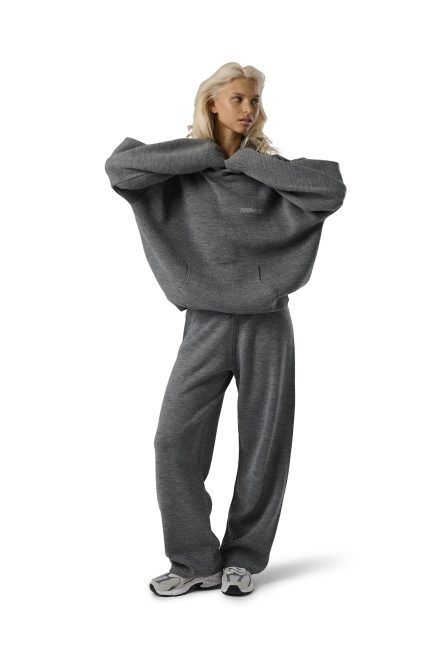Learn why dust settles so fast and discover 10 effective methods — from HEPA air purifiers and upgraded filters to smarter cleaning habits — to keep your home cleaner, longer.
No matter how thoroughly you clean over the weekend, it can feel discouraging to return to a layer of dust just a day or two later. Especially in smaller homes, homes with pets, or places with older HVAC systems, keeping dust at bay can feel like a constant uphill battle.
Dust is more than just visible grime. It’s made up of microscopic skin flakes, fibers from clothes, pet dander, hair, mold spores, carpet debris, and particles from furniture. Some of this originates from inside your home, some drifts in from outdoors, and many particles settle when no one is watching.
Why You See Dust So Quickly
Several factors can accelerate dust accumulation:
- Your HVAC system may be circulating dust
If air ducts are dirty or filters are low-grade (or overdue for replacement), the system can blow dust into the rooms. Using higher-grade filters (MERV 11 or MERV 13) and changing them every 1–3 months helps. - Drafty windows and door seals let outdoor dust in
Cracks or degraded seals allow outdoor dust to slip indoors. Weatherstripping and door sweeps can seal those gaps. - Pets shed constantly
Even short-haired animals release hair, dander, and skin particles into the air. Use a vacuum with a HEPA filter and brush pets outdoors to reduce indoor fallout. - Shoes bring in debris
Dirt, pollen, and fine dust adhere to shoe soles, following you inside. A “no-shoes indoors” policy plus entry mats helps intercept that. - Home décor attracts dust
Thick rugs, curtains, open shelves, and textured fabrics trap dust. Using simpler, washable materials and fewer dust traps can reduce accumulation. - Electronics generate static that draws dust
TVs, computers, and cords hold small charges, which attract particles. Use anti-static cloths and clean electronics regularly.
10 Proven Tips to Keep Dust Away Longer
You don’t need expensive tools or daily deep cleaning. These ten methods can significantly reduce dust buildup:
- Get a True HEPA air purifier
These can trap 99.97% of airborne particles. Place them in bedrooms and living areas, especially near vents or windows. - Avoid feather dusters — use damp microfiber cloths
Feather dusters tend to fling dust around. A slightly damp microfiber cloth traps particles more reliably. - Brush pets outdoors
Grooming your animals outside keeps loose hair and dander from settling indoors. - Use a vacuum with a sealed HEPA system (not just a bagless cyclone)
Many vacuums recirculate fine dust. A sealed HEPA unit captures allergens and particles better. - Enforce a “no shoes inside” rule
Leave shoes at the door. Put washable mats and a covered shoe rack at all entrances. - Upgrade to a MERV 13 HVAC filter
Basic filters let fine dust pass through. MERV 13 filters trap smaller particles and pollen. Replace them every 2–3 months (or more often in dusty environments). - Apply anti-static spray to electronics
Reduce static build-up on TVs, computers, and consoles to lower dust attraction. - Reduce clutter and dusty décor
Cut down on rugs, knickknacks, books, and artificial plants. Clean baseboards and window ledges weekly. - Add a humidifier (if air is too dry)
Dry air lets dust float more easily. Keeping humidity at 40–50% helps weigh particles down. - Set a weekly dusting schedule
Pick a day to dust, vacuum, and run the purifier. A quick 15-minute routine beats irregular deep cleans.
How to Pick Tools That Actually Work
When choosing dust control tools, keep the following in mind:
- True HEPA filtration matters — only real HEPA filters can catch microscopic particles.
- Size and coverage area — an underpowered purifier or humidifier won’t keep up in larger rooms.
- Reusable vs disposable — washable tools like microfiber cloths and reusable filters save money and perform better.
- Purpose-specific tools — corner brushes, anti-static cloths, or handheld vacuums help in tricky zones.
- Noise and usability — too much noise means you’ll stop using the tool, so pick quiet ones for daily living spaces.
Also, avoid these common pitfalls:
- Cheap furnace filters (MERV 1–8) that only catch big particles
- Feather dusters
- Bagless vacuums without HEPA systems
- Ionic or ozone “air purifiers”
- Materials and surfaces that build up static easily
The best defense is to combine several strategies: trap dust where it lands, filter it out of the air, reduce its entry, and clean smart.
FAQs About Dust Control
Q: Why does my home get dusty so fast even after cleaning?
Hidden causes—like dirty filters, poor seals, and static surfaces—continue feeding dust. Unless you address those, cleaning alone won’t keep surfaces dust-free.
Q: Can I completely eliminate dust?
Not realistically — dust is a part of life (skin, fibers, pollen, etc.). But with good tools and habits, you can cut dust buildup by 70–90%.
Q: Are carpets worse than hard floors?
It’s not black-and-white. Carpets trap dust, while hard floors let it settle visibly. A carpet vacuumed with a HEPA-filtered vacuum can be better than neglecting bare floors.
Q: Do air purifiers help with dust?
Yes — if it’s a True HEPA purifier. Run it continuously in high-use rooms to catch dust before it settles.
Q: What’s a fast way to improve a dusty room?
Use a HEPA air purifier on high, vacuum with a sealed HEPA vacuum, and wipe surfaces with a damp microfiber cloth. Also check vents and windows.
Q: Should I use a humidifier or dehumidifier?
If your air is too dry, a humidifier helps reduce floating dust. In a damp space, a dehumidifier prevents mold and musty dust.
Q: How often should I change HVAC filters?
Every 1–3 months is ideal. In dusty or pet-heavy environments, monthly changes work best — especially with MERV 13 filters.




